Zookeepers are excellent in creating innovative and simple solutions to daily challenges in zoo life. Because many zoos have limited (financial) resources, zookeepers need to find ways to make alternatives to make their work easier. In this series, I will share these brilliant hacks, often very simple solution so that you can use them at your facility as well. In the first part of the series, we look at several hacks to prevent freezing locks and kinking in aquarium hoses, spy on bird boxes and feed administration for a large group of animals.
Hack #1 Prevent kinking in aquarium hoses
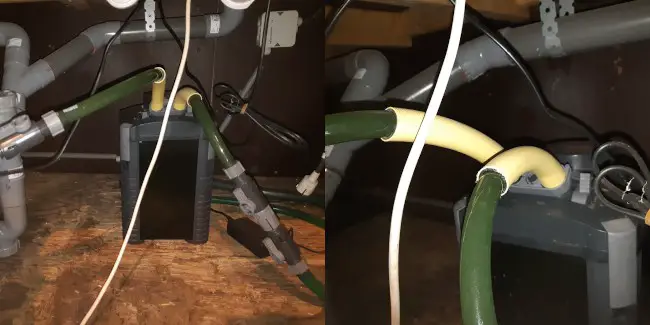
Problem: Aquarium hoses connected to aquarium filters are vital systems for the many different species. It controls the water quality of aquariums and paludariums but often regulates the water temperature too. But sometimes, most often by regularly removing the lid of the filter, the hoses will bend and kinking, slowing down and blocking the water flow.
Solution: Guide the aquarium hoses through a piece of garden hose or pre-bend PVC pipe. This way it will prevent that aquarium hoses kinking and blocking the water flow. It is cheap to use, and both of these products are easy to use and bend.
Hack #2 Prevent freezing locks
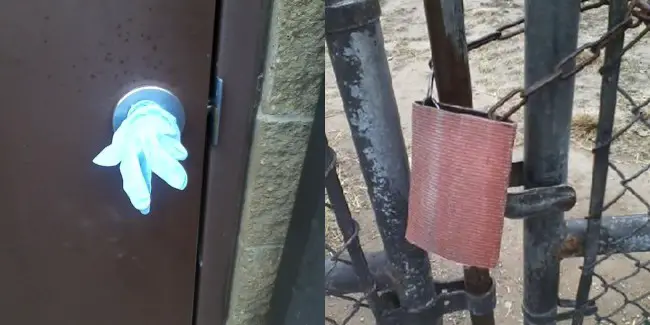
Problem: With colder climate and weather, there is nothing as frustrating as frozen locks and ice-covered doorknobs. Also, for security reasons, it is important that locks can be opened and closed as fast as possible. But there is an easy hack.
Hack: With frost and expected ice storms, cover in advance doorknobs with rubber gloves, grocery bags or Ziploc bags. This hack will prevent a coat of ice. For padlocks, you can use a small piece of firehose to prevent frosted locks.
Hack #3 Keep heat in holding area with firehose strip doors
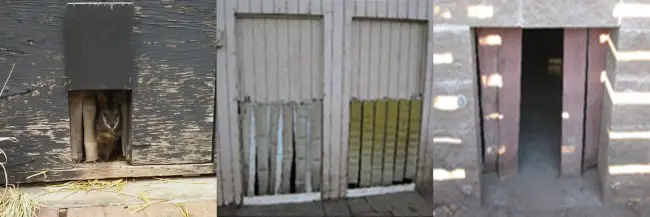
Problem: When animals have access to heated holding areas during the day and night, the heat/air conditioning escapes out the door. Secondly, native animals find their way inside.
Hack: Similar to refrigerator strip doors that keep the cold air in walk-in freezers, strips of firehose are hung in doorways to off-exhibit holding areas. Weights can be added to the bottom of each strip to keep them taut. We bolt scraps of metal just inside the bottom of each strip for this purpose. These can be used with a variety of doors types (guillotine, sliders, Dutch doors, etc.). It is also easy to customize the strip doors depending on the size of the door opening and the species you are making it for.
These strip doors serve numerous purposes, including:
- Keeping heat or cool air inside the buildings when the animals have access;
- Deterring birds or waterfowl from getting inside and eating grain or meat diets, building nests or just leaving behind a mess;
- Fly spray can be sprayed on the strips to help keep flies out, and the fly spray will also rub on the animals as they enter/exit through the strips.
You will need to monitor new animals as they are introduced to strip doors to make sure they are comfortable entering the holding area. You may need to remove a few of the centre strips until they are accustomed to the strip doors.
Hack #4 Check/spy bird nest boxes
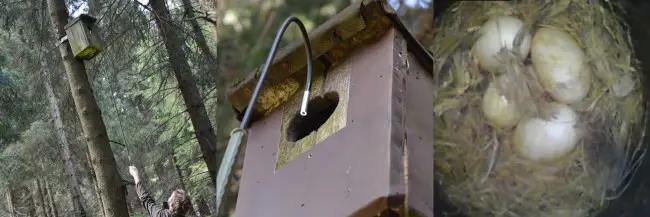
Problem: Within the breeding season, check bird nests regularly without making it very time-consuming and to make it less disturbing.
Solution: Using a USB endoscopic camera attached to a long pole, you can quickly and easily check bird nests regularly. These endoscopic cameras are very cheap and very simple to use/install. Some cameras support WIFI, but these cameras are more expensive. You don’t have to climb to the nest every time to check the nests, and these cameras have often LED light so you can have a good look. With features like taking photos and videos are also a great way to register each nest (egg laid, day of laying, day of hatching). In this way, it is less time consuming to check many bird boxes, without keeping track of the progress.
There are also ways to use these cameras to make wifi camera bird boxes.
Hack #5 Make a non-slippery surface
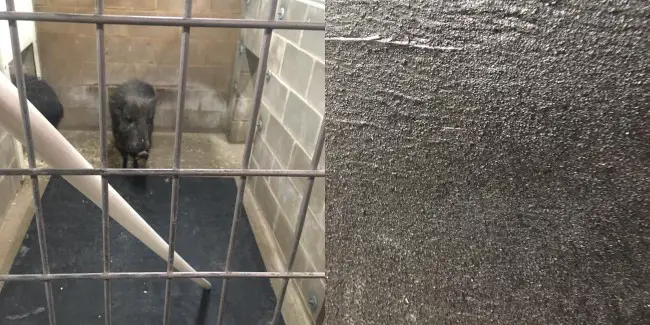
Problem: A surface of a (scale) platform, ramp or slope is too slippery for the animal, or the animal(s) do not like to walk on a smooth surface.
Solution: With this method, you create a non-skid coating on any surface as needed. First, paint the surface with paint that is appropriate for the type of material that the surface is made of. Then scatter some fine sand evenly into the wet paint and let it dry. Tap or brush off any loose sand. Lastly, put another layer of paint on top of the sand to seal it in and let it dry completely. This method works to add some coarse texture to any surface and should last for several years. I cannot claim credit for this idea. It was borrowed from one of our maintenance workers.
Hack #6 Feed administration for a large group of animals
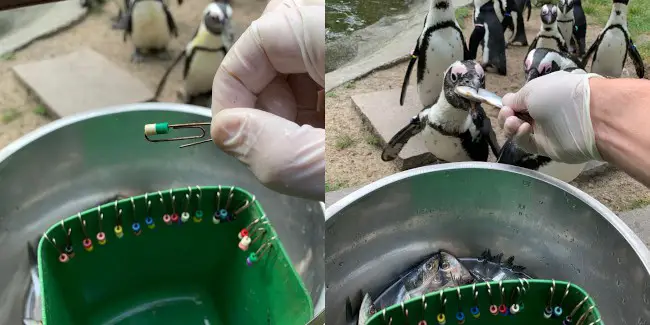
Problem: It can be hard to check if every animal has had his portion of food. Especially when they need a certain amount of supplement. This supplementing is often the case when feeding fish to animals, like penguins.
Solution: A system with colour-coded paperclips that match the ID of the animal is an easy way to keep track if everyone had their portion. The easiest way is that the paperclips are attached to the bucket with food. By rearranging the paperclips, you check if every animal had their supplements. With the use of paperclips, it is no problem to touch it with dirty hands or when they get moist/wet, in contrary to a paper administration.
Let me know your zookeeper hacks
I hope this inspires to create hacks for your challenges as a zookeeper. But I am also curious about your zookeeper hacks. I know many zookeepers are creative in finding the simple but perfect solutions for problems and challenges we encounter in our daily work. If you have such a zookeeper hack, I would really appreciate it if you share it with me at info@zoosnippets.com. Please send me a picture with a little description, and I will add it in one of the next parts of the zookeeper hacks series.
Do you have additional solutions to the problems mentioned above? Please let me know in the comments below! I really like to hear the genius solution you have thought of.
See also part 2 of this series with more zookeeper hacks!
Share this page!